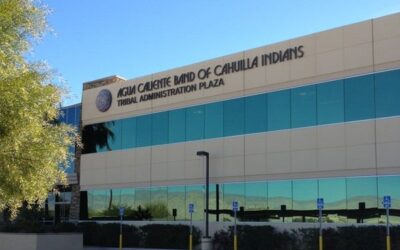Most businesses are aware of the Payroll Protection Program (PPP), which included a first draw in 2020 and a second draw in 2021. The PPP provided much needed assistance to many businesses suffering because of the COVID pandemic.
There is another government business assistance program that can be of great value to a business impacted by COVID business restraints- the program is the Employee Retention Credit (ERC).
Initially passed in 2020, a business receiving a PPP loan was not eligible to apply for ERC and this program was overlooked and infrequently used. Under the Consolidated Appropriations Act, a business may now take advantage of ERC for 2020, even if it received PPP funds and the program is expanded to include 2021.
For 2020 the credit is 50% of qualified employee wages paid between March 13, 2020 to December 31, 2020, up to $10,000 per employee. A potential credit of $5,000 per employee.
A business must demonstrate a decline in quarterly gross receipts in 2020 of 50% or more when compared to the same quarter of 2019; or it must have experienced a full or partial shutdown of its operations due to a government COVID restriction.
While the 50% gross receipts decline may be hard to meet, in California many businesses were forced to close their doors or reduce capacity due to government regulation. For example, many restaurants were forced to restrict their operations to less than full capacity or only operate outdoor dining. These impositions by government will qualify a business to apply for the Employee Retention Credit.
There is a catch, any wages used to apply for PPP loan forgiveness cannot be used to apply for ERC. This caveat makes proper filing of PPP loan forgiveness application very important. Poor planning can result in lost credits.
2021 Employee Retention Credit
The 2021 ERC is easier to qualify for and the amount of the credit has been increased to 70% of wages up to $10,000 per employee for the first two quarters of 2021. The decrease in gross receipts test threshold has been reduced from 50% to 20%, comparing gross receipts for the first 2 quarters of 2021 to the same quarters of 2019, if the decline is 20% of more it qualifies for the credit. Like 2020, a business will qualify if it meets the government restriction test. The business shutdown can be full or partial.
Wages used for PPP loan forgiveness cannot be used to claim the employee retention credit. Therefore, proper planning and allocation of wages for PPP loan forgiveness is critical to maximize PPP forgiveness and ERC. An example best demonstrates why strategic reporting of wages for PPP loan forgiveness is crucial.
Example of Strategic Allocation of Wages for PPP Loan Forgiveness and ERC
Assume a business applied for and received a PPP loan in the first draw of $100,000. In the final quarters of 2020 a business experienced a partial government restriction of its operations. Also assume that over the 24 week “covered period” for PPP the business paid $100,000 of qualified wages and incurred $30,000 of other PPP “qualified costs”. When applying for PPP loan forgiveness if a business simply submitted wages of $100,000 (because it was easy to do), it would receive full loan forgiveness. A better approach would be to report qualified wages of $70,000 and other qualified expenses of $30,000, the total of qualified expense would be $100,000 and enough to qualify for 100% loan forgiveness. By allocating wages in this strategic manner, the business has preserved $30,000 of wages to qualify for ERC. If this represents 5 employees at $6,000 each, the resulting credit would be $15,000. The difference in these 2 methods of applying for PPP is that a business that is informed and aware of ERC, can properly allocate wages between PPP forgiveness and ERC with the result being a substantial tax credit that would otherwise be missed.
If a business did not claim the ERC for 2020 it can amend payroll returns for 2020 and receive refunds, assuming it meets qualifications. In addition, there may even be an opportunity to revise a PPP forgiveness application that claimed excessive wages that otherwise qualify for ERC.
When a business has a full understanding of the interplay between PPP loan forgiveness and the Employee Retention Credit, it can properly allocate wages to result in 100% loan forgiveness and a substantial Employee Retention Credit.




